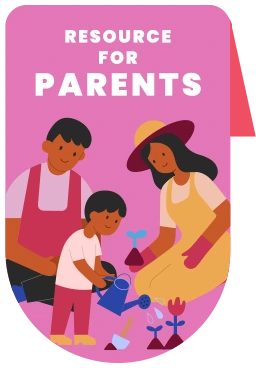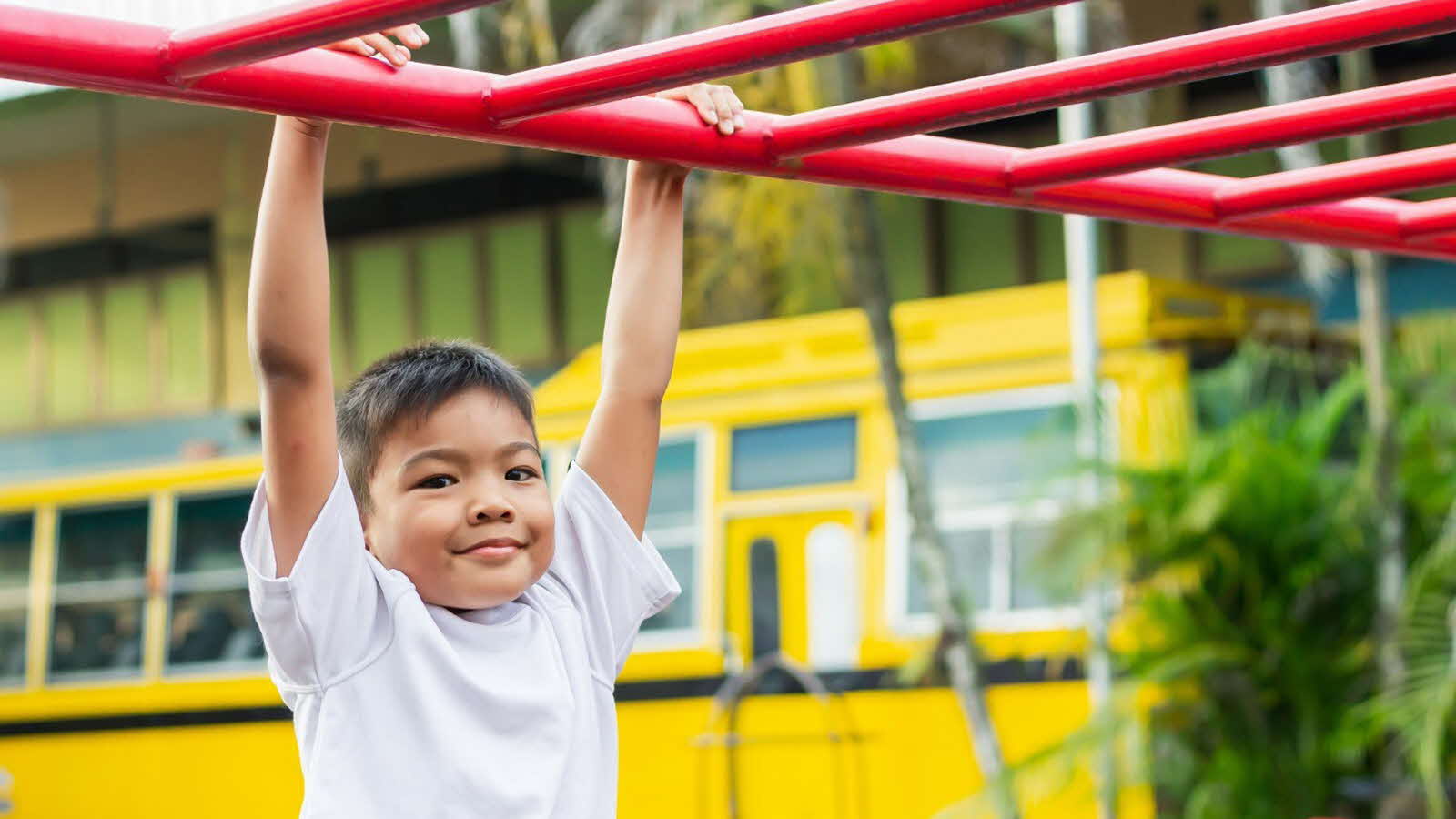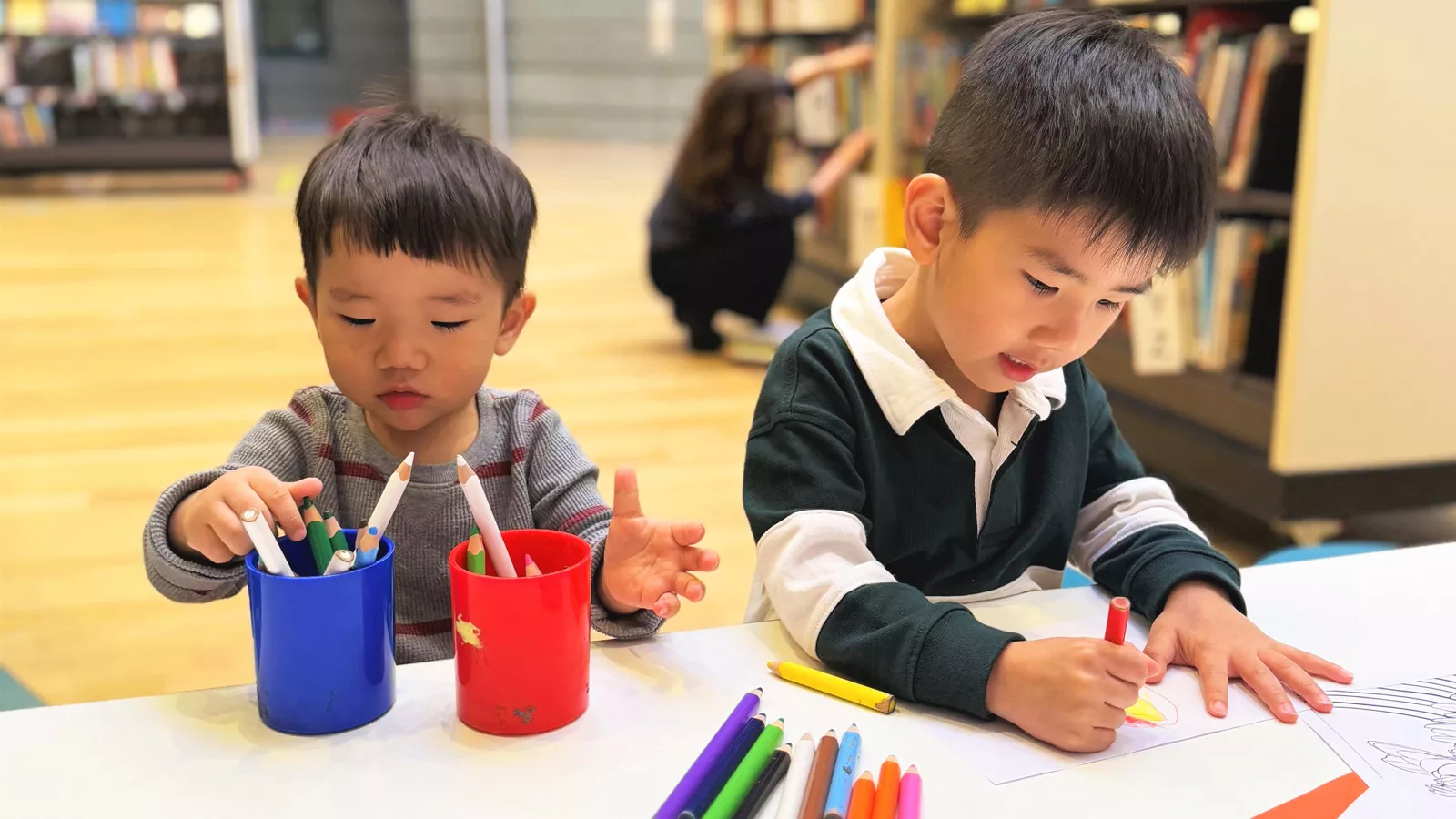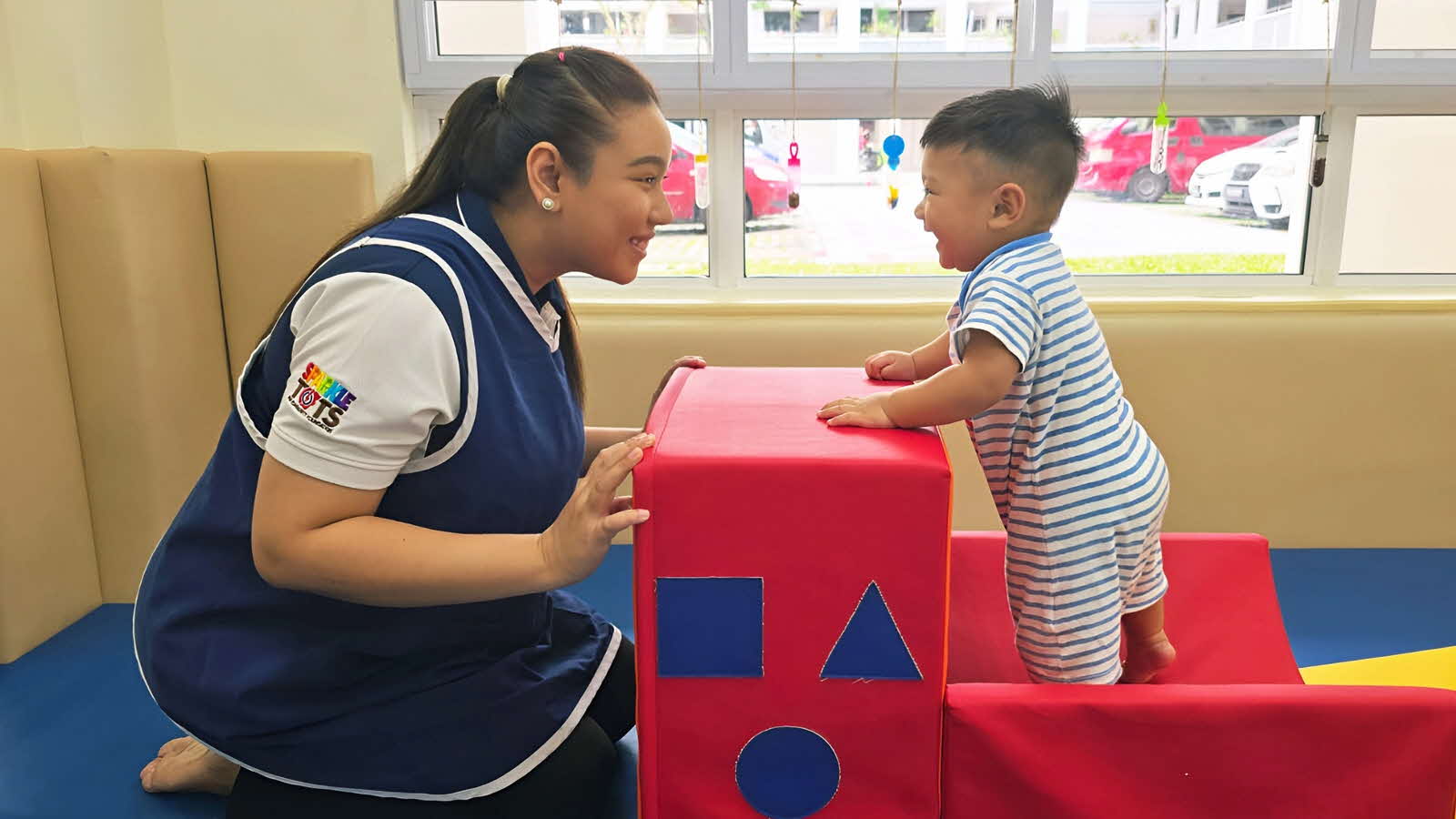Hear the language, learn the language — studies show that the more words a baby hears, used multiple times and in different contexts, the better the child will understand the meaning of those words and begin using them.
Early communication and language development forms the basis for literacy, predicting better outcomes in school and beyond. It also supports children’s cognitive and social-emotional development, including problem-solving skills and learning to express feelings and form relationships.
Here are some fun ways to incorporate language into children’s daily routines.
1MAKE READING A DAILY HABIT
 Reading to children every day boosts their language development.
Reading to children every day boosts their language development.
Choose books with illustrations. Point out and describe the pictures while reading in an animated tone. It is okay if babies want to hear the same story, as repetition helps with understanding and acquiring new words. Babies will respond with coos, gestures and facial expressions. As they gradually become more familiar with the books, ask them questions about the pictures (e.g. “Where is the moon?” or “What colour is the ball?”).
2SAY THINGS OUT LOUD
Narrate what you are doing (e.g. “Here we go into the bathtub” or “I’m putting on your socks”). Be attentive to infants’ gestures, facial expressions and sounds, and respond verbally. For example, when your baby coos, coo back. When they reach for a toy, you can say, “Do you want the toy?”. This introduces children to the back-and-forth nature of conversations.
3USE SONGS AND GAMES
 To add alphabet awareness to pretend play, parents can provide touch-and-feel letters of the matching activity.
To add alphabet awareness to pretend play, parents can provide touch-and-feel letters of the matching activity.
Babies and toddlers love nursery rhymes. Besides the catchy melodies and repetitive lyrics, songs like ‘Head, Shoulders, Knees and Toes’ have accompanying actions to help children understand what the words mean. Pretend play is another good vocabulary-building activity. Act out parts of a story, pretend to chat on a play phone, or host a tea party with soft toys.
4SPEAK ‘PARENTESE’
 ‘Parentese’ involves the use of simple words and phrases, accurate pronunciations and correct grammar.
‘Parentese’ involves the use of simple words and phrases, accurate pronunciations and correct grammar.
Unlike the meaningless “goo-goo-ga-ga” of baby talk, ‘parentese’ is a communication style that uses real words and is characterised by a high-pitched, sing-song voice and long vowel sounds (e.g. “Hiiii, bayybeee!” or “The dog is sooo cuuuute!”). This way of speaking holds children’s attention and helps them remember words better. Make eye contact when speaking ‘parentese’ to your baby. Pause and give your child a chance to respond in their own way.
5WEAVE NEW WORDS INTO EVERYDAY CONVERSATION
During mealtimes, talk about the flavours, textures and colours of food. When your baby notices a family photo at home, tell them where it was taken and about the people in the photo. While travelling, describe what you see outside the window. Once children start using words, build on what they say. For instance, if your child says “ball”, you can reply descriptively with “Yes, it is a big red ball”.







